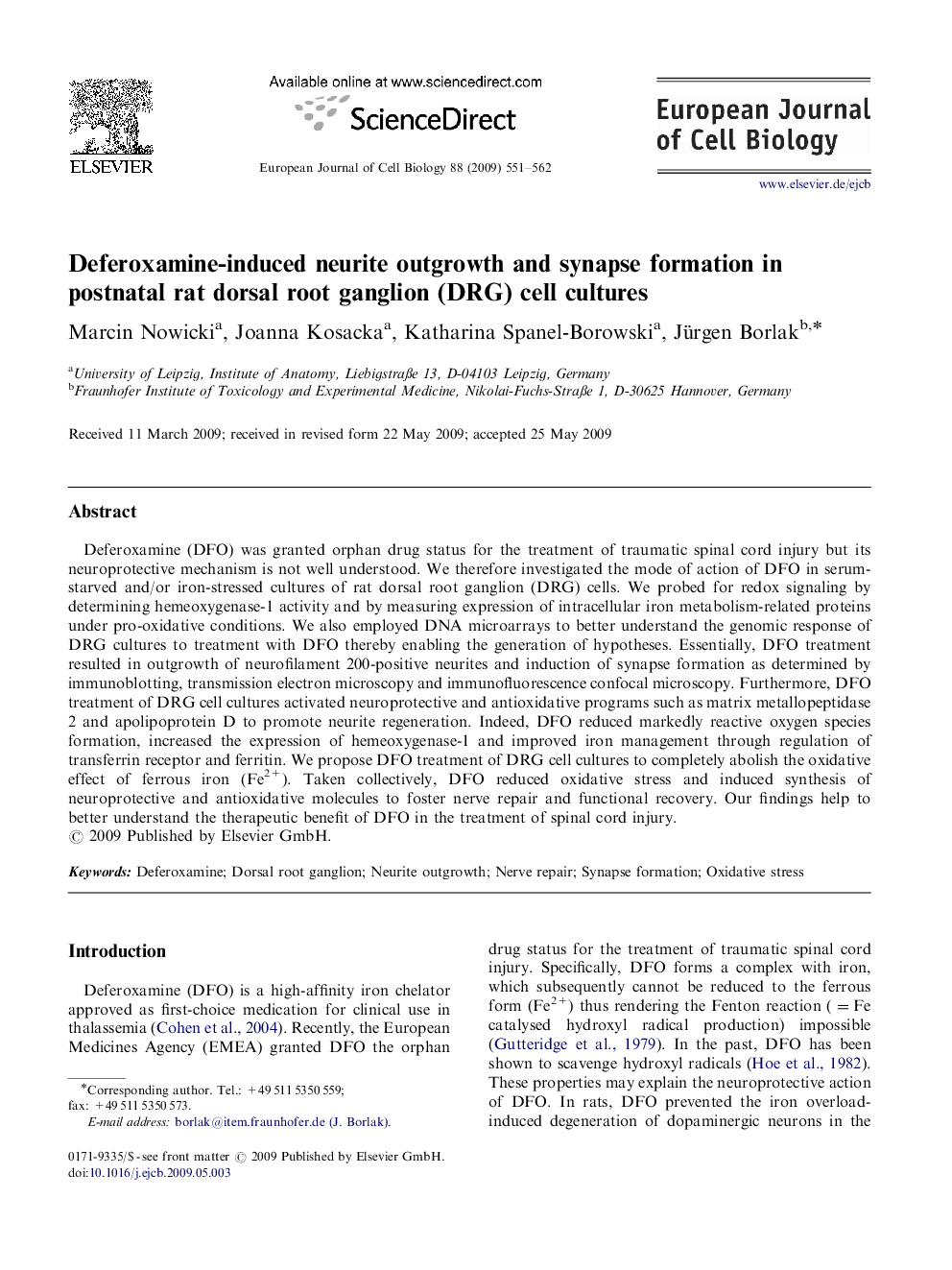| Article ID | Journal | Published Year | Pages | File Type |
|---|---|---|---|---|
| 2178728 | European Journal of Cell Biology | 2009 | 12 Pages |
Deferoxamine (DFO) was granted orphan drug status for the treatment of traumatic spinal cord injury but its neuroprotective mechanism is not well understood. We therefore investigated the mode of action of DFO in serum-starved and/or iron-stressed cultures of rat dorsal root ganglion (DRG) cells. We probed for redox signaling by determining hemeoxygenase-1 activity and by measuring expression of intracellular iron metabolism-related proteins under pro-oxidative conditions. We also employed DNA microarrays to better understand the genomic response of DRG cultures to treatment with DFO thereby enabling the generation of hypotheses. Essentially, DFO treatment resulted in outgrowth of neurofilament 200-positive neurites and induction of synapse formation as determined by immunoblotting, transmission electron microscopy and immunofluorescence confocal microscopy. Furthermore, DFO treatment of DRG cell cultures activated neuroprotective and antioxidative programs such as matrix metallopeptidase 2 and apolipoprotein D to promote neurite regeneration. Indeed, DFO reduced markedly reactive oxygen species formation, increased the expression of hemeoxygenase-1 and improved iron management through regulation of transferrin receptor and ferritin. We propose DFO treatment of DRG cell cultures to completely abolish the oxidative effect of ferrous iron (Fe2+). Taken collectively, DFO reduced oxidative stress and induced synthesis of neuroprotective and antioxidative molecules to foster nerve repair and functional recovery. Our findings help to better understand the therapeutic benefit of DFO in the treatment of spinal cord injury.
